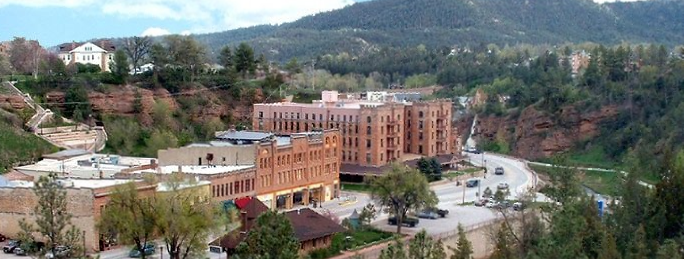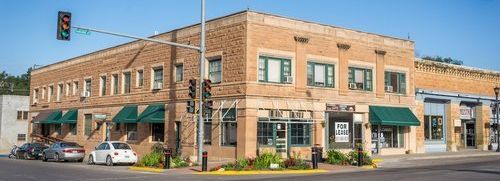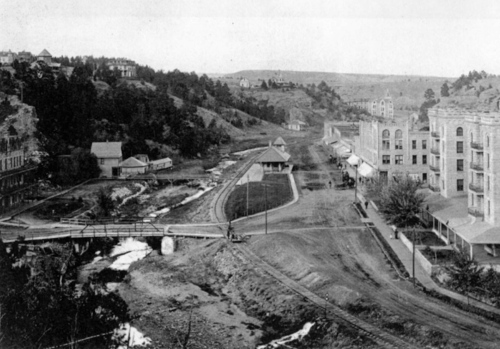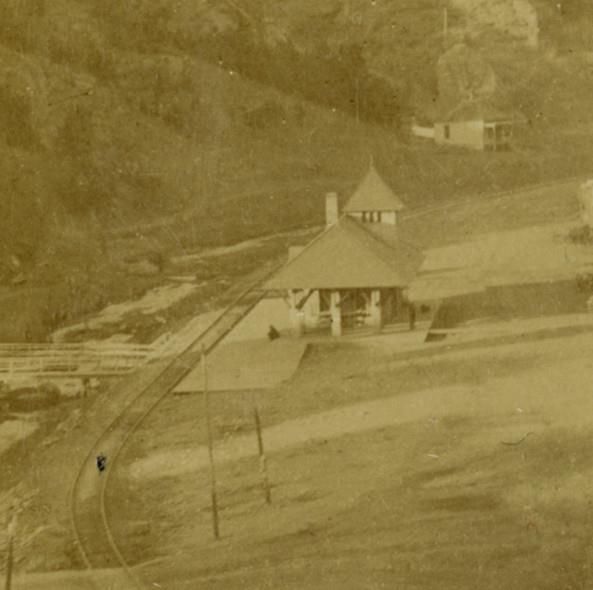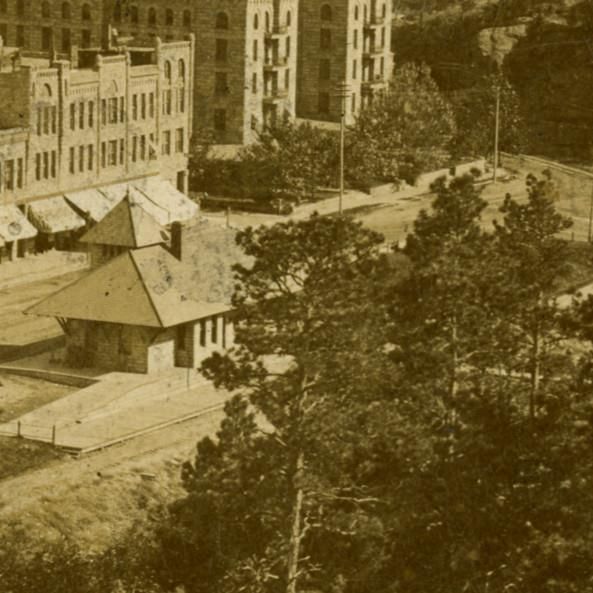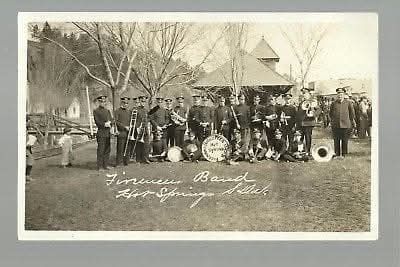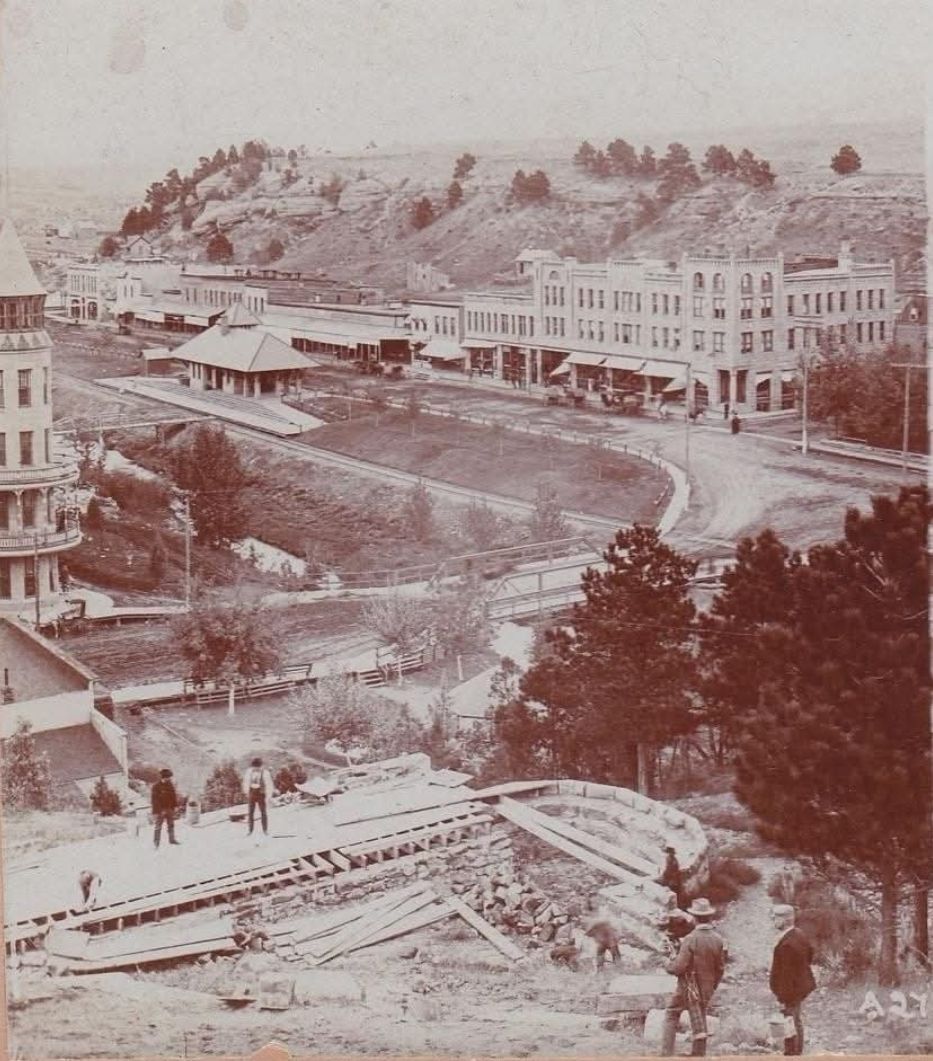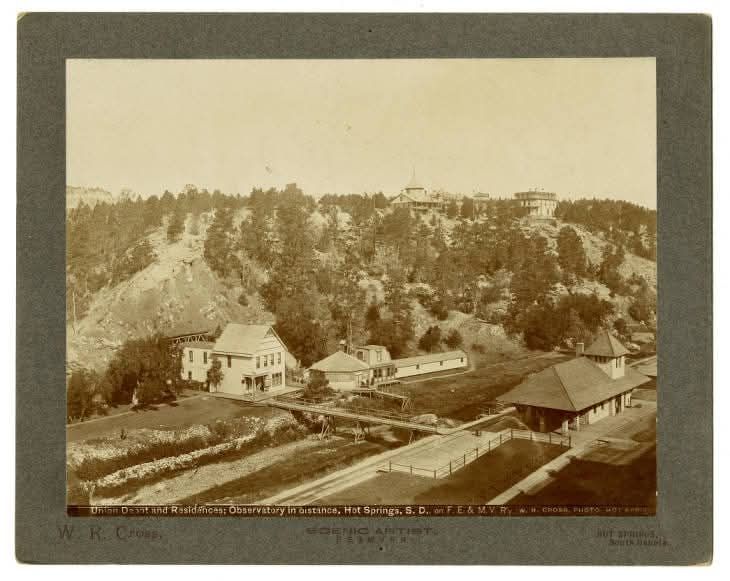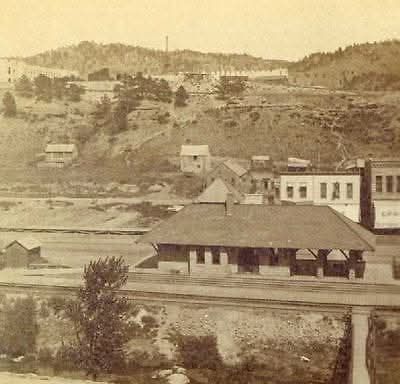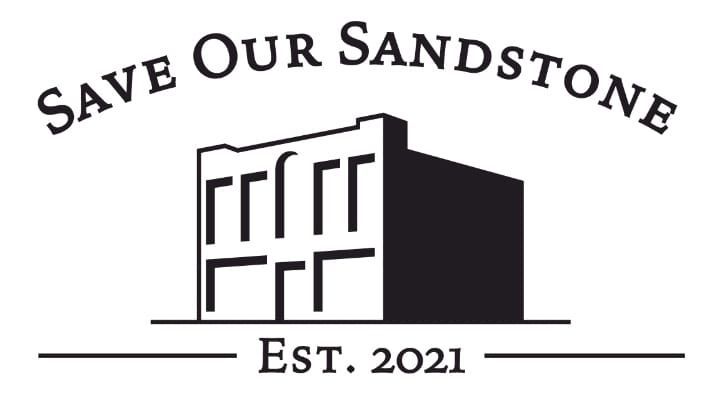Union Depot Building
🧱 Union Depot aka Visitor Center
Address: 630 North River Street, Hot Springs, SD 57747
Built:
1891
First Occupant:
Northwestern, Chicago, Burlington and Quincy Railroads
Current Occupant:
Chamber of Commerce Visitor Center
Sandstone Quarry:
Unknown
Architect:
Unknown
Contractor:
Mason Richard Cosgrove
Architectural Style:
Local adaptation of the Richardsonian Romanesque style with broad hip roof, round-arched entry, square tower with pyramidical roof and spire, and wide eaves supported by corbelled brackets.
📜 Historical Overview
Reputed to be the “smallest Union Depot in the world,” the 1891 depot served as the terminus for the Fremont, Elkhorn & Missouri Valley; Northwestern; and Chicago, Burlington & Quincy Railroads. September 18, 1891 marked the arrival of the first through train — almost. The track was incomplete, so the train stopped at the Trimmer Bridge near today’s South 6th Street bridge. Even so, the fare to Buffalo Gap was just 66 cents, less than half the stage fare, and the arrival was celebrated as proof Hot Springs had “arrived” as a town.
The depot was constructed under the supervision of master mason Richard Cosgrove, with stonework completed by late October 1891. The building featured a covered platform, electric lighting (installed 1909), and later additions including waiting rooms, enclosed porches, indoor toilets, and a heating plant (1927).
Flooding in June 1937 destroyed the Chicago & North Western line into town. The CB&Q rebuilt within weeks, but the Northwestern abandoned the route in 1938. That same year, the city purchased the depot for $3,200 as part of F.O. Butler’s beautification project, creating one of the first known adaptive reuses of a railroad station in the U.S. The Chamber of Commerce moved in by 1940.
In 1967, the CB&Q proposed closing the depot, prompting public hearings. By 1970, the city secured a quitclaim deed from both railroads for $600 total, solidifying the building’s role as a community welcome center.
📝 Poem – To the Old Depot by Badger Clark
Good old depot, past a doubt
Your most glorious days have been—
No more trains a-puffing out,
No more trains a-clanging in.
Now we have another king—
Buick, Ford or Chevrolet—
That sly purring catlike thing
Which we travel in today.
Once we went away in style,
Folks and friends to see us off,
Flowers and candy, kiss and smile,
Sighs (but covered by a cough)
Till the engine's din would drown
At the last our shouted leaves.
Now we scuttle out of town
Surreptitiously as thieves.
Travel safe and dignified,
Space and leisure, Pullman bunks,
Wise old engineer to guide,
And Joe Weyl to check the trunks.
Now the traveler starts to roam
Doubtful as to getting back,
Knows not whether he'll come home
In one piece or in a sack.
But we got home then, all right.
"Minnekahta!" "Buff'lo Gap!"
"Change for Hot Springs!" And we'd light,
Good old depot, in your lap.
To a gray old-timer's eyes
Your plank platform faintly glows
With a thousand fond goodbyes
And a thousand glad hellos.
Well, old friend, that's all a dream.
Father Time has turned the page
From the rugged Age of Steam
To the slick Monoxide Age.
Modern times are best, Amen.
Yet, by Holy Henry Ford!
How we'd love to hear again
The conductor's "All Aboard!"
📍 Modern Era
Today, the Union Depot continues to serve as the Chamber of Commerce Visitor Center during the summer season, greeting guests to Hot Springs much as it has for over 130 years.
🔍 Research Notes & Requests
Save Our Sandstone is still seeking:
- Historic photographs of the depot during its peak passenger years
- Documentation of the 1938 adaptive reuse project
- Records of the original interior layout
QR Code Info:
Built in 1891, the Union Depot served three major railroads and welcomed Hot Springs’ first trains. After a 1937 flood ended rail service by one line, the city purchased the depot in 1938—one of the nation’s first railroad-to-public reuse projects. Now home to the Chamber Visitor Center, the depot continues to greet travelers more than 130 years later.
